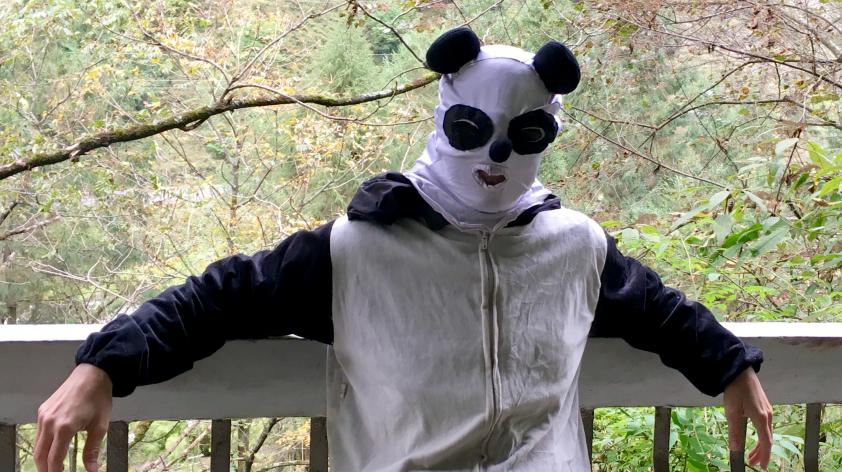
Suitable for a Panda
It’s hard to see where I’m going, and I slip on a wet branch. Despite the drizzly, cool weather, I’m a little bit warm. My tail gets in the way when I try to sit down.
Why?
Because I’m wearing a panda suit, of course! And it’s all in the name of science.
In the mountainous regions of Sichuan Province, China, the bamboo-forested hills of the Wolong Nature Reserve are like something from a painting. Nestled in a steep valley is one of the facilities operated by the China Conservation and Research Center for the Giant Panda. This site used to be a major hub of CCRCGP’s giant panda breeding program, but it was severely damaged in the 2008 earthquake. Since that time, new and beautiful panda facilities have been built in nearby Genda and in the larger town of Dujiangyan, several hours away.
The Wolong site, however, has been repaired and is being used to prepare young pandas to live in the wild. As captive panda breeding has become more and more successful (pandas have even been removed from the endangered species list), focus has shifted to improving panda habitat and allowing some animals to be reintroduced into their historic range.
Here at Wolong, mother and cub pairs are housed in large, forested, outdoor enclosures that are virtually indistinguishable from the surrounding natural panda habitat. Animals are observed via remote cameras and human interaction is kept to a minimum in order to prevent habituation. Cubs and their dams live here for up to two years. Then the cubs who are candidates for reintroduction into the wild are moved into an even more remote location for further pre-release assessment and training
So why the panda suit?
Workers within close range of pre-release pandas wear these black and white suits to minimize the animals’ habituation to humans; this will keep pandas safer once they’re in the wild. During this visit, my colleague (Dr. Megan Owen, from Recovery Ecology) and I donned our suits in order to get a closer look at the enclosures. In particular, I wanted to assess potential disease risks to these iconic animals and get a feeling for their pre-release life.
We in the Disease Investigations team are working on a plan to help make sure reintroduced pandas stay healthy. In collaboration with our CCRCGP veterinary colleagues in China, we are developing a testing and surveillance plan that will prevent introduction of disease along with reintroduction of pandas. This collaborative work will improve our understanding of causes of giant panda mortality and morbidity, leading to better health management of captive, wild, and reintroduced pandas.













